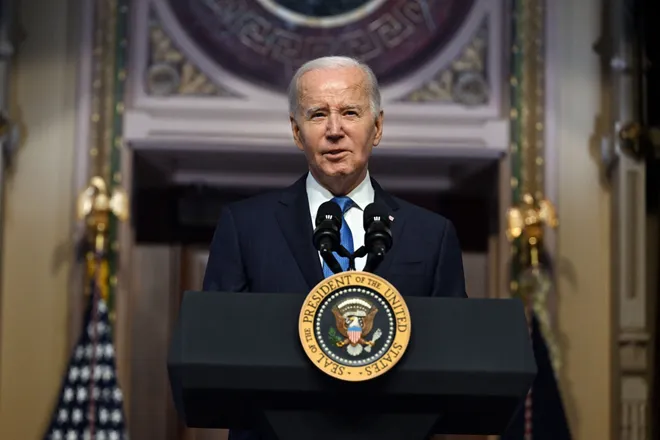Biden. Rolling Stones. Harrison Ford. Why older workers are just saying no to retirement
Joe Biden is in the White House. The Rolling Stones are going on tour. And Harrison Ford is still playing Indiana Jones.
The AARP-card-carrying 65-and-up crowd isn’t showing any signs of slowing down.
In a major demographic shift, the older workforce – some 11 million Americans – has quadrupled in size since the mid-1980s, driven by the graying of the U.S. population.
The share of older Americans holding a job is also much greater.
Roughly 1 in 5 Americans ages 65 and older (19%) are employed today – nearly double the share of those who were working 35 years ago, according to new data from the Pew Research Center.

No idle hands for these retirement-age workers. They are working more hours, on average, than in previous decades. Today, 6 in 10 older workers are holding down full-time jobs, up from nearly half in 1987.
Women make up a bigger share of the older workforce, too, accounting for 46% of all workers 65 and up, up from 40% in 1987.
And, while the majority of older workers are white – 75% – their share has fallen, though the younger workforce is more racially and ethnically diverse.
The Bureau of Labor Statistics predicts that 21% of older adults will be in the U.S. workforce in 2032, up from 19% in 2022.
What’s driving the trend? For one, older workers are more likely to have a four-year college degree than in the past – and adults with higher levels of education are more likely to be employed.
Some 44% of today’s older workers have a bachelor’s degree or higher, up from 18% in 1987.
Older workers are also more than twice as likely as younger workers to be self-employed and more likely to be the beneficiaries of income from pension plans and coverage from employer-sponsored health insurance.

Defined contribution plans, unlike pensions, as well as Social Security raising the age that workers receive full retirement benefits to 67 from 65 have encouraged workers to delay retirement.
They are also healthier and less likely to have a disability than in the past and gravitate to “age-friendly” positions that are less physically strenuous and allow for more flexibility.
Another key factor: They are more likely to say they enjoy their jobs and less likely to find it stressful, according to a Pew Research Center survey.

The staying power of older workers has increased their contribution to the U.S. workforce. In 2023, they accounted for 7% of all wages and salaries paid by employers, more than triple their share in 1987.
The earning power of older workers is growing, too.
In 2022, the typical older worker earned $22 per hour, up from $13 in 1987. The wages of younger workers – aged 25 to 64 – haven’t kept pace.
Disclaimer: The copyright of this article belongs to the original author. Reposting this article is solely for the purpose of information dissemination and does not constitute any investment advice. If there is any infringement, please contact us immediately. We will make corrections or deletions as necessary. Thank you.







